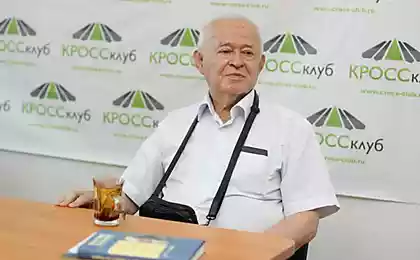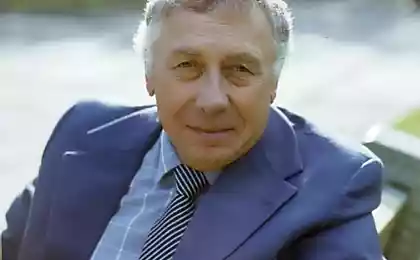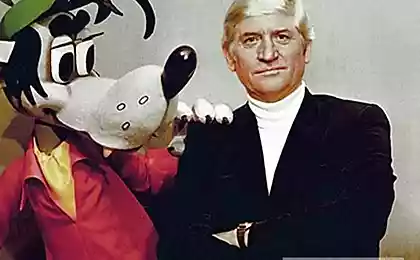366
A guide to psychology. Issue 10. Groups and Teams: Why People Unite for a Common Purpose
Description: In this article, we will look at the phenomenon of groups and teams from a psychological point of view: why people come together, how collective goals are formed, and what affects the success of the team. The author analyzes the key factors of group dynamics and shares fascinating examples.

Introduction
From early childhood, we learn to act together: play in a team of football, prepare projects at school, cooperate with colleagues at work.
In adulthood, most of our achievements are the result of teamwork, where each participant makes a unique contribution.
Why are people so focused on unity?
How exactly is a single purpose formed and what motivates us to work for the common good, not just for personal gain?
Group psychology answers these questions by revealing the multifaceted nature of “command chemistry.”
Themes overlap here. leadershipMotivation, social influence and role behavior.
In this article, we’ll look at key aspects of group dynamics, learn why people come together, and analyze what they do.
What factors make a team strong and effective?
Main part
What is a group and how is it different from a team?
In social psychology Usually distinguish between “groups” and “teams” according to the level of organization and integrity of interaction:
- Group a set of people united by a common characteristic or activity,
They don't always have a clear internal structure and distribution of roles. - Team. a more organized form where participants perform specific roles,
They coordinate actions for the sake of a joint result and are most often aware of their common identity.
But the project team, developing scientific work under the guidance of a teacher, is already closer to the “team”.
because common resources are involved, interaction is established and collective responsibility for the result is built.

Why do people come together?
Historically, our ancestors survived by banding together in tribes and hunting groups, making it easier to defend against predators and compete for resources.
From an evolutionary point of view, the ability to “stand shoulder to shoulder” brought a greater chance of success. survival.
But even in today's world of individualism, we still form teams.
- Common interest or purpose. People come together around projects, ideas, or hobbies to overcome challenges and share risks.
- Exchange of resources. As a team, we use each other’s different skills and resources to achieve better results.
- Support and security. The collective gives a feeling of security - psychological or even physical.
Together, we feel stronger. - Social identity. When we belong to a group, our self-esteem often increases.
The feeling of being part of something bigger is inspiring and empowering.
Stages of team development
Bringing people together does not guarantee success. The team needs to be grown, and psychologist Kurt Levine,
And then Bruce Tuckman, a few of them. stage her development:
- Formation (Forming). People meet, define their roles, look at leaders. Usually politeness and caution reign.
- Rivalry (Storming). A period of conflict and struggle for power or influence.
Participants can work out relationships, trying to defend their point of view. - Rationing (Norming). Common rules and values are established, the level of conflict is reduced.
Mutual trust is formed. - Activities (Performing). The team is well-worked, everyone knows their task, the overall goal is clear.
The energy goes to productive work. - Disintegration or Transformation (Adjourning). When the project is completed or circumstances change,
A team may cease to exist or “evolve” into another form.
Some people get stuck in the competitive phase or, on the contrary, cannot clearly define roles and form uniform norms.
However, understanding these stages helps leaders and participants to be prepared for temporary turmoil and keep working on the team.

Key factors of a successful team
Why do some teams achieve outstanding success and others fail despite their stellar cast?
Research shows that five main factors play an important role:
- Clear target. Everyone should understand what the group is moving towards and agree on the value of this goal.
- Good leadership. The leader should not dictate, but guide and motivate, taking into account the opinions of the participants.
The ability to listen, allocate resources, and resolve conflicts are critical skills. - Effective communication. Open exchange of information, lack of hidden agendas,
Clear feedback – all this contributes to increasing trust and reducing the likelihood of conflict. - Established norms and values. The group must have rules of engagement,
which the participants respect. These unwritten laws shape cohesion and predictability. - Diversity of competencies. A strong team includes people with different skills and characters.
They can complement each other. Some analyze well, others are creative, others are able to organize the process.
When teamwork goes awry
Teamwork is not always an idyll. There are. barriersThey can undermine even the most promising project:
- Social laziness. A phenomenon in which individual team members reduce their efforts by relying on
"Others will do more." - Conflict and ambition. If there is unhealthy competition or unresolved personal conflicts,
Productivity suffers and stress increases. - Fuzzy roles. When participants do not understand who is responsible for what, errors, duplication of functions and irritation occur.
- Weak communication. The lack of discussion of tasks and problems leads to
Decisions are made “one-sidedly” or not at all.
fix the situation. Team success is primarily a competent organization and understanding of psychological dynamics.
It's not just a collection of "talented" individuals.
Conclusion
People come together for a common purpose, not just because it’s been so historically.
It's conscious The path to more effective problem solving, mutual support, and personal identity through belonging to something greater.
than we are. In groups, we develop, learn to negotiate, distribute roles, find compromises and act in concert.
Understanding the psychological mechanisms underlying group dynamics helps build successful teams.
Whether in business, education or in the social sphere. It is important to remember that each group goes through its own “childhood diseases”.
And instead of writing it off as "bad collective" or "wrong people," we should ask:
What can we do to make our goals, communication and roles clearer to everyone?
With the right approach, even the most diverse set of people can turn into a “cooled machine”.
Ready for the most difficult tasks.
Thus, the secret of a successful team is not only the talents of the participants, but also a general understanding of the mission, leadership support.
Transparent communication and a culture of mutual assistance. When all of these elements come together, the collective has amazing power.
Capable of overcoming barriers and achieving outstanding results.
Glossary
Social psychology
Direction in psychology, studying the influence of society and social factors on human behavior and thinking.
Identity
Awareness of belonging to a certain group or category, forming an idea of yourself and your place in the world.
Group dynamics
The process of interaction of group members, including the stages of formation, roles, conflicts and joint decision-making.
Leadership
Ability to lead a group, motivating participants and helping them achieve their goals.
Social laziness
A phenomenon in which a person makes less effort when working in a team, relying on the activity of others.
Bruce Tacman
American psychologist, author of the classic model of five stages of team development (Forming, Storming, Norming, Performing, Adjourning).
A guide to psychology. Issue 9. Empathy and Empathy: Sharing the Joy and Pain of Others
A guide to psychology. Issue 11. Fear, Stress, and Overcoming: How to Deal with Pressure























